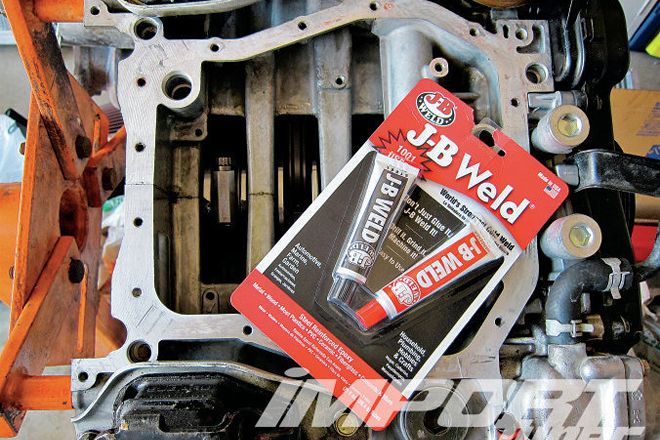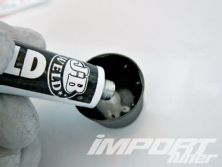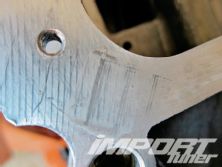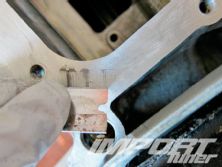If you work and/or play in the automotive world, you’re familiar with a product called J-B Weld. J-B Weld is a two-part epoxy adhesive (or filler): an epoxy resin (black tube) and a hardener (red tube). When mixed together in equal portions, a chemical reaction occurs that turns the mixture into a rock-solid compound once cured, offering tensile strengths of up to 3,960 psi; heat resistance up to 500 degrees Fahrenheit; and is impervious to water, gasoline, chemicals, and acids. Since the introduction of J-B Weld in 1968, consumers have thought and heard of many uses for this do-it-all epoxy, ranging from plugging radiator leaks to repairing cracked intake manifolds.
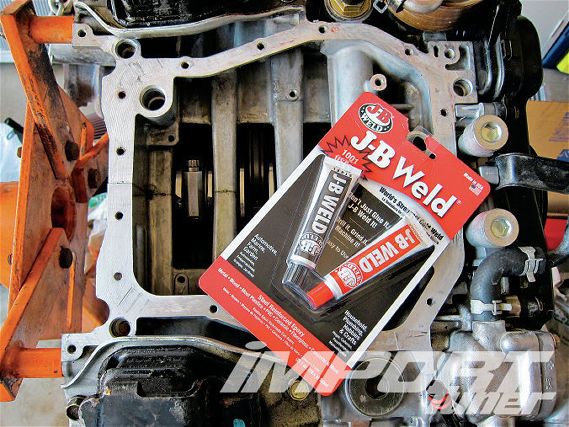 |
Engine Block Repair - Tricks of the Trade
|
Engine Block Repair - Tricks of the Trade
J-B Weld is known as a great tool for closing voids and sealing cracks, so we figured it would be the perfect product for repairing our scuffed/gashed Subaru engine block surface. Simply masking the problem by applying thick globs of silicone sandwiched between the damaged block and oil pan would serve as a quick fix, but only leak over time. Instead, we mixed up some J-B Weld and applied the epoxy to the damaged area before smoothing it out using a razor blade. A clean shop rag was used to wipe away excess material before allowing the epoxy to cure for 24 hours. After it had cured, it was time to sand and/or grind the block surface flat before reinstalling the oil pan.
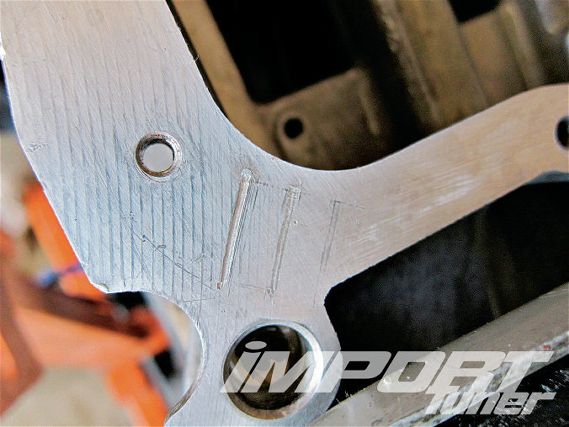 |
Engine Block Repair - Tricks of the Trade
|
Engine Block Repair - Tricks of the Trade

